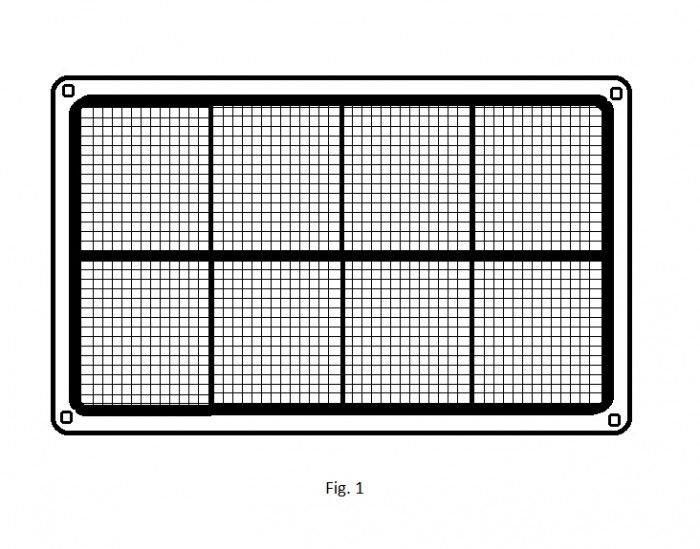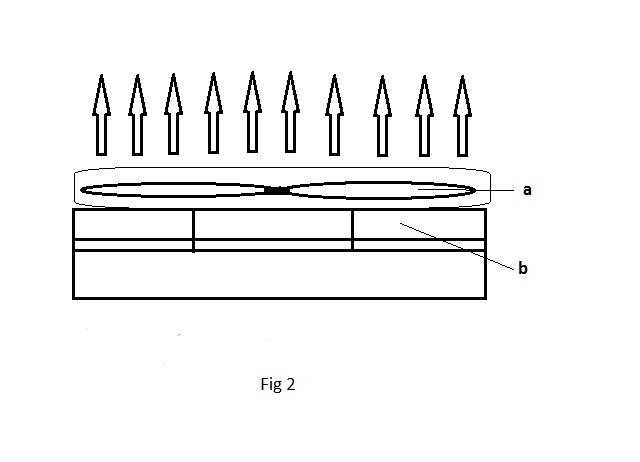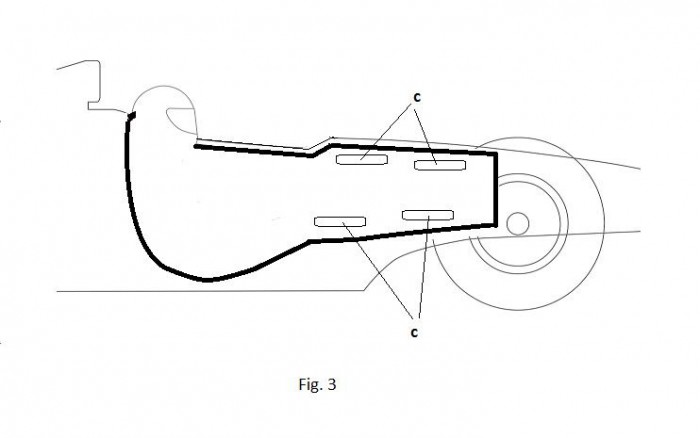
Home List your patent My account Help Support us
Thermoelectric cooling system of a car interior
[Category : - OTHER- Automotive Accessories - ELECTRICITY & LIGHTING]
[Viewed 3126 times]
A car or Formula 1 Grand Prix, produce a lot of power, but also a lot
of heat to be dissipated to maintain reliability.
With an ambient temperature may be around 34 ° C, but the helmet
and overalls pilot himself may come in its outer layer to 50 ° C
temperature and the temperature inside the passenger compartment
70 is reached.
In addition to the heat generated by the car, to which is added the
interior temperature, the days of high temperatures and humidity,
dehydration is much more severe, because the anti-flare pilots
clothing prevents the removal of perspiration and dissipation of heat
produced by the muscular work and stress, which can lose 3 to 4
liters by body dehydration, which brings about heat illness as
cramps, heat exhaustion and heat stroke. Besides the exhaustion
and cramps are causes of forgetfulness or diminution of reflexes.
These high temperatures cause a dehydration part and is essential
to drink a lot before the race, and bottle of water is just a few hot
laps of racing. The pilot usually lose about 3.5 kg. in this race with
sweat. Sometimes humidity exceeds 80% and in these conditions
the body sweat, which helps cool it and can achieve hypothermia
does not evaporate.
Currently they lacking any refrigeration in the passenger
compartment or cabin of a car, and has been ruled an air
conditioning refrigerator as these systems produce a reduction in
mechanical power by the alternator and increased fuel consumption.
It is necessary as a liability and no moving parts system because
the cooling characteristics of the thermoelectric cooling by Peltier
cells is usually used only in environments in which care more about
the nature of solid state with no moving parts, since it requires little
cooling power due to the small size to be cooled.
DETAILED DESCRIPTION OF THE INVENTION
A thermoelectric cooling system in the passenger compartment or
cabin of a car using the Peltier effect this followeth invention
consists of a system of heat cells thermoelectric Peltier effect, acting
as a pump solid state active heat and transfers heat to a side of the
device to another opposing temperature gradient, thereby
consuming to electrical energy.
The thermoelectric cooling using the Peltier effect to create a heat
flux through the junction of two different materials, such as metals or
semiconductors P and N.
Thermoelectric coolers are based on the thermoelectric effect.
When an electric current circulates through a thermoelectric device
suitably configured, heat is transported from the opposite side of the
device and does not require moving parts, which increases reliability
and eliminates noise and vibration.
Given its relatively low efficiency, thermoelectric cooling is typically
used only in environments in which care more about the nature of
solid state with no moving parts than efficiency.
Connecting a voltage source causes the cooling of one of the
parties, while the other is heated.
However, thermoelectric joints usually of around 5-10% efficiency
for an ideal refrigerator, but potential for more than sufficient cooling
and low cooling power which is required due to the reduced
dimensions to be cooled.
Using a Peltier cell system, configured in such a way to create a
cooling assembly with the feature of not having moving parts or
subtracting power to the motor of the car vehicle it is proposed in
this invention.
This whole system is configured by joining a group of cells forming
a cooling system, in which is regulated by temperature sensors such
as thermocouples, which act regulator power to increase or
decrease the temperature inside the cockpit or cabin of a car.
DESCRIPTION OF AN EMBODIMENT
A thermoelectric cooling system by these Peltier effect
thermoelectric devices, it follows her invention, are arranged in
groups (Fig.1) for consideration by the cooling power required to
achieve, for example they could be set to 6 or more systems
thermopile Peltier effect, where you incorporate an electric fan low
profile and suction mode (Fig.2 a) the role and functionality of
extracting the cold and distribute it to the cockpit or cabin of the car,
where willing Peltier thermopile other systems configured in groups
such as 6 or more thermopiles, with corresponding low profile fans
in suction mode, (Fig.2 a) for distributing the cold and protected by a
grid-shaped frame protective, thus forming a cooling system, in
which these systems thermopiles are regulated by temperature
sensors such as thermocouples which activate via a regulator
electric current to increase or decrease the temperature inside the
passenger compartment or cabin the car.
This system Peltier thermoelectric cooling by thermopile, use to
operate the energy store or car battery, and require a minimum of
electric power accumulator or vehicle battery, to be governed
primarily by a switchboard that through a system of thermostat or
thermocouple, regulate the power of the Peltier thermoelectric
system through a current regulator for the optimal use of cooling and
temperature control of all cabin or cockpit of the car.
DESCRIPTION OF THE FIGURES
The number Figure 1 shows the system of Peltier cells, where they
are distributed in number of 6 or more and using a low profile fan
and suction mode (Fig.2 a) extracts the cold set Peltier cells and
distributes it to the cabin or cockpit of the car, and this system
protected Peltier cells by a frame-shaped protective grille.
In Figure 2 the number system Peltier cells in cross section, where
the Peltier cells are seen (Fig.2 b) the fan and the housing that
makes up the cell system is appreciated. (Fig.2 a)
The number 3 shows a representative figure of a single-seater
vehicle in which distributed systems are Peltier cells (Figure 3 c) is
seen forming the set of thermoelectric cooling inside the cabin or
cockpit of a car.
 Patent publications:
Patent publications:No publication
Asking price:
Make an offer
Make an offer



[ Home | List a patent | Manage your account | F.A.Q.|Terms of use | Contact us]
Copyright PatentAuction.com 2004-2017
Page created at 2025-12-13 7:21:15, Patent Auction Time.
 Great invention
Great invention